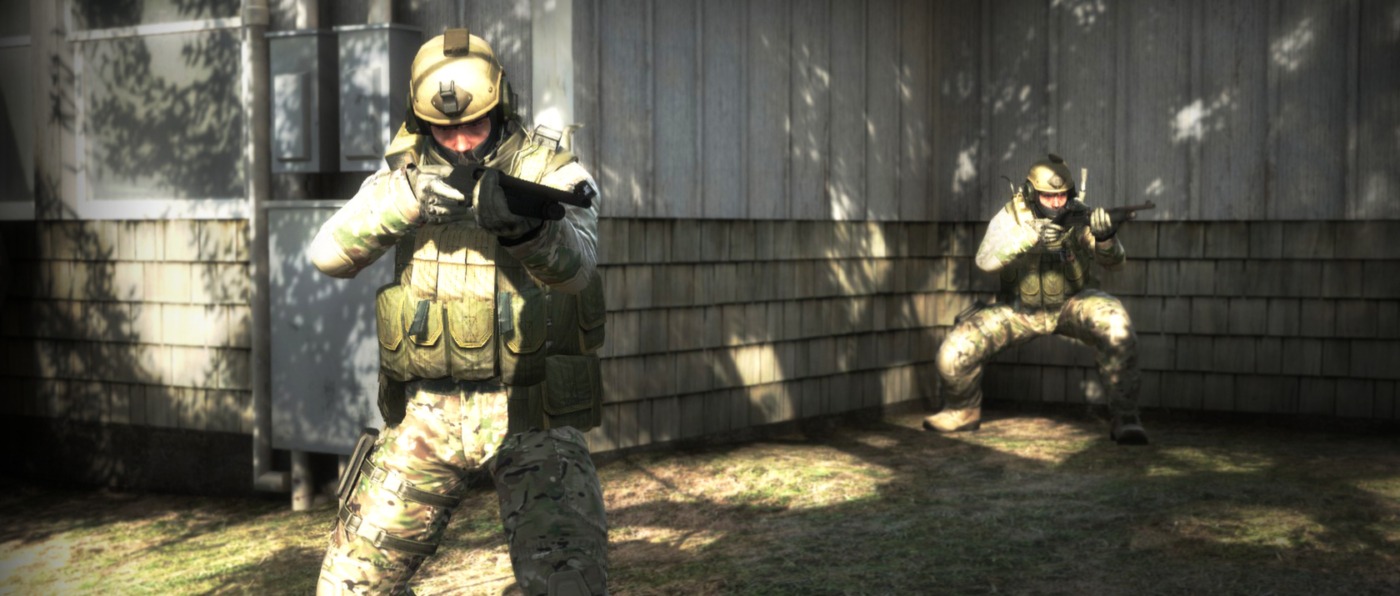‘CS:GO’: The Game That Never Dies
Counter-Strike: Global Offensive was on the decline when I first started playing in early 2018. Its average concurrent player numbers were down by over 30% in May compared to February, with Valve’s now-infamous seven-day cooldown policy for CS:GO trade items heavily affecting the player base. Some gamers started jumping to the conclusion that the shooter was now becoming “a dead game”.
Two years later, and CS:GO has reached concurrent player numbers never seen before on its servers, beating DOTA 2 to being the second most concurrently played game of all time on Steam in April 2020, with 1.3m according to steamcharts.com.
As the game approaches its ninth birthday, it begs the question: why does this game just refuse to die? How did this straightforward shooting game stand the test of time so well, especially when half its player base only ever plays one dusty old map, and use the same three rifles over and over?
Counter-Strike is a franchise built on simple concepts. It is this simplicity in its nature that makes it so appealing. CS does not require a great deal of brainpower to understand. There is no need to learn hundreds of different abilities across countless characters.
In CS:GO, it gets no more complicated than what the eye can see. It’s a game of two sides; one defending, one attacking, trying to win either through eliminating each other or by planting/defusing C4s. It is this type of simplicity which is key to the accessibility of any game, virtual or physical. There is a reason football is the world’s most popular sport, after all.
However, being simple is just part of the jigsaw to long-term dominance. The phrase “easy to learn, difficult to master” often describes the best games or sports, and while CS:GO lives up to the first part of the phrase well, it is in the second part where the game really shines. This is a game where the sky is truly the limit.
The easily understandable nature of the game along with its steep learning curve provides endless potential for beginners and veterans alike
The predictable, yet violent shooting mechanics is something that takes hundreds upon hundreds of hours to master, an ingeniously worked aspect of the game that keeps both hardcore fans and newbies coming back for years on end. A sense of completion is near impossible – there is always something that could be improved. When NiKo, one of the best players of the game, fails to eliminate an opponent by missing 12 of 13 shots from 5 metres, you know this game takes a lot to master.
One has to consider the momentum that CS:GO’s developers Valve had gathered for one of its most profitable franchises. With its huge esports scene, second only to Valve’s own other esports title DOTA 2 in prize money awarded, Counter-Strike: Global Offensive has established a loyal viewing fan base. Fans can watch the pros battle it out on Twitch or, along with over one million other viewers, tune in to watch CS:GO’s biggest professional tournaments, the Majors.
With a $1m prize pool, the ELEAGUE Major: Boston 2018 is what started my interest in the game. The final was one of the most dramatic finals of any esport event ever, and after an incredible comeback made by Cloud9 against FaZe Clan, they became the first North American esports team to win a Major in CS:GO history. Underdog stories like this are what makes any sports tournaments a pleasure to watch, and the Majors are no exception. It is no wonder then that the final described here garnered 1.3m concurrent viewers on Twitch in its most intense moments, more than twice the peak viewership figures of Ninja’s Fortnite stream with Drake a month later.
Having witnessed a brief shrinking of the community during Spring and Summer 2018, CS:GO started its path up to the top of Steam by the end of the year. By making the game free and introducing a new battle royale mode, Valve successfully brought back many of its old players who have left the franchise earlier in the year for the then legendary battle royale PlayerUnknown’s Battlegrounds, while also encouraging new players to explore its other modes. Average concurrent players increased by 27% that December. With Covid-19 causing its biggest player base in Europe to stay home in early 2020, the Counter-Strike franchise achieved new heights that just two years ago seemed impossible.
I could go on about why CS:GO isn’t going anywhere, anytime soon, be it Valve’s mostly laissez-faire approach to community markets and third party tournaments, or its various sub-communities like that of surfing or trading – the list never ends. But in short, the easily understandable nature of the game along with its steep learning curve provides endless potential for beginners and veterans alike. Place on top of that a well-established esports system with a fully developed, professional, third-party, and grassroots support, is it really a surprise that the valve holding back this game from death has been so strong for nine years straight?

Comments